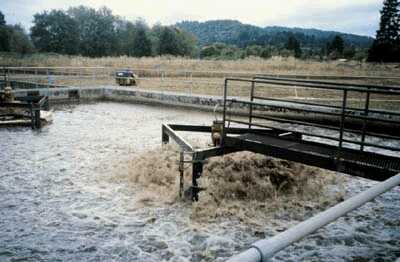

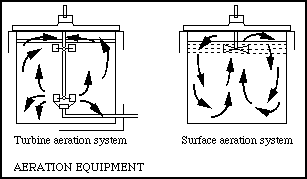
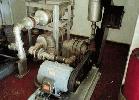


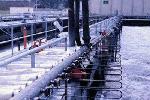
 "Diffuser Installation"...
"Diffuser Installation"...
| Effluent quality parameter | Mean | No of samples | 95 % confidence interval | Range of data |
| BOD5 (mg / L) | 37 | 112 | 32 - 42 | 0 - 208 |
| Soluble BOD5 (mg / L) | 15 | 94 | 12 - 18 | 0 - 120 |
| COD (mg / L) | 108 | 116 | 100 - 116 | 20 - 349 |
| TSS (mg / L) | 39 | 117 | 33 - 46 | 3 - 252 |
| VSS (mg / L) | 27 | 118 | 23 - 32 | 1 - 144 |
| Total N (mg / L) | 36 | 87 | 34 - 38 | 15 - 78 |
| NH3 - N (mg / L) | 0.9 | 92 | 0.1 - 1.7 | 0 - 60 |
| NO2 + NO3 (mg / L) | 30 | 95 | 27 - 33 | 0.3 - 72 |
| Total P (mg / L) | 26 | 80 | 22 - 30 | 6 - 140 |
| PO4 - P (mg / L) | 21 | 78 | 18 - 24 | 6 - 51 |
| Fecal coliform (Log no / L) | 5 | 115 | 4.7 - 5.3 | 2.8 - 7.3 |
| Fecal streptococci (Log no / L) | 4.3 | 113 | 3.9 - 4.7 | 2.0 - 6.3 |
| Parameter | Average concentration (mg / L) |
| BOD5 | 5 - 20 |
| TSS | 7 - 22 |

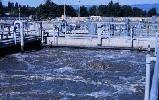
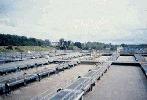
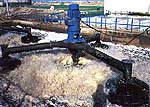
| Estimated initial aerobic unit costs, installed, and including septic tank pretreatment unit | $ 6,000 |
| Equipment repair / replacement costs, estimated at $ 50 / year | $ 4.17 / month |
| O & M, with a maintenance contract of $ 360 / year (est. 12 hrs. @ $ 15 / h * 2.0, including taxes, overhead, and profit) | $ 30 / month |
| Septage and sludge pumping once annually (it is assumed that the septic tank is pumped simultaneously, as needed, so as to eliminate separate costs for that) | $ 14.58 / month |
| Energy costs (using 6 KWh / day energy use) | $ 14.60 / month |
| 20 - year NPW (not including design & permitting costs) | $ 13,573.76 |

